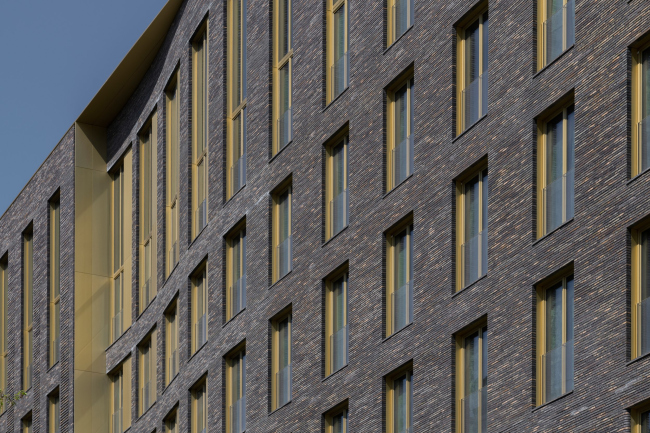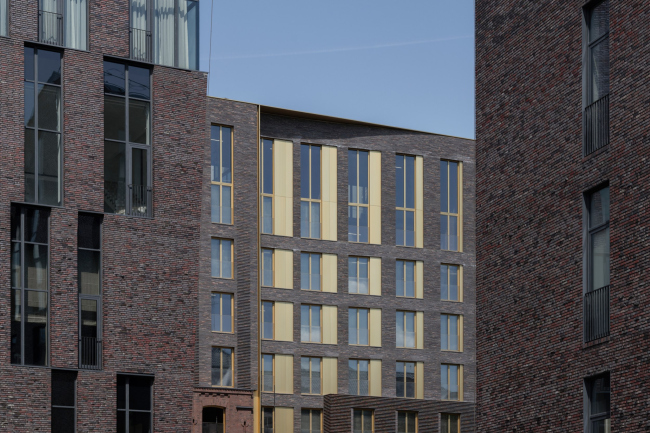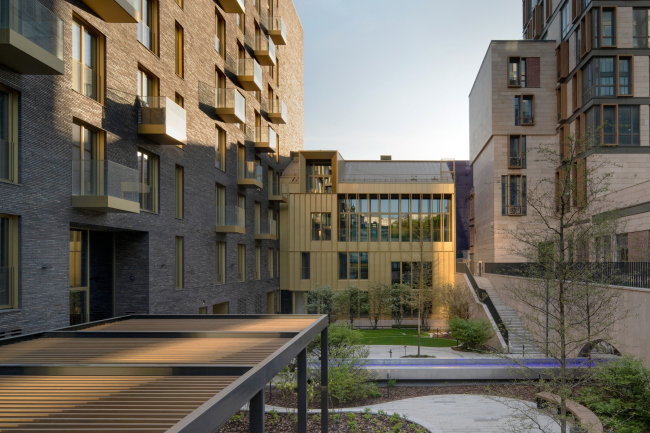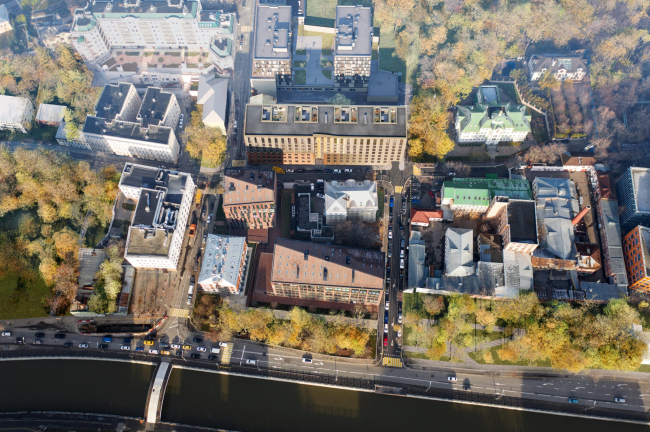|
Published on Archi.ru (https://archi.ru) |
|
| 05.08.2024 | |
|
Domus Aurea |
|
|
Julia Tarabarina |
|
| Architect: | |
| Sergey Skuratov | |
| Studio: | |
| Sergey Skuratov architects | |
|
In this issue, we examine the “Tessinsky-1” house, designed by Sergey Skuratov and completed in 2023. Located in the middle of the Serebryanicheskaya Embankment district, at the intersection of its main streets, this house assumes a sort of “nodal” role: it not only responds to everything around it and preserves many memories of the former EMA factory within itself, but it weaves all this into a newly directed pattern, reconciling bright “gold” and dark-colored brick, largely with the help of the new, modern-yet-archaic Columba brick, which, come to think about it, is the most precious element here.
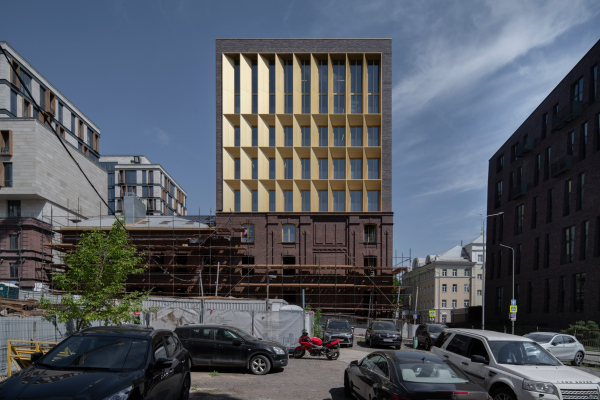 “Tessinsky-1” residential complexCopyright: Photograph © Daniel Annenkov / provided by SSA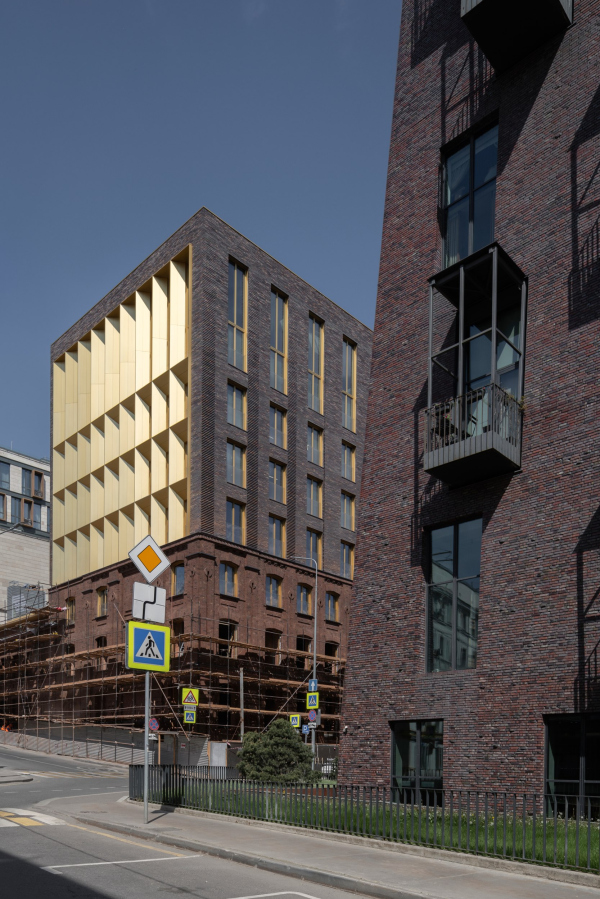 “Tessinsky-1” residential complexCopyright: Photograph © Daniel Annenkov / provided by SSAIt cannot be said that the Serebryanicheskaya Embankment district has been fully formed so far – if only because the plot across from it, at the same intersection, is still vacant – but a certain “nodal accent” has definitely appeared in its mix. Or simply – a “node”. This place can now host seminars on stylistic analysis and contextual thinking for architecture students – I won’t be surprised if someone is already doing this. Meanwhile, we will try to observe and note some interesting features of the house. Firstly, it responds to everything around it – taking and giving back. Here you begin to think that the name Tessinsky is not coincidentally phonetically similar to the word “tissue” – the house literally weaves and intertwines various themes into a sort of tissue here. In this, it is very different from the introverted Art House; and that one, too, is an example of reflections on the “spirit of the place”. How different houses can be! One is dark, brutal, concisely faceted, closed off, and contemplative. Proud, detached, silent, either a rock musician or an artist at an exhibition: he will only speak using words sparingly. The new house, if we continue the comparison, is more like the curator of the same imaginary exhibition: it seems to be “in charge of everything”, i.e. for the entire district as a whole. It raises its golden head, holding the intersection and the perspective of Serebryanichesky Lane. 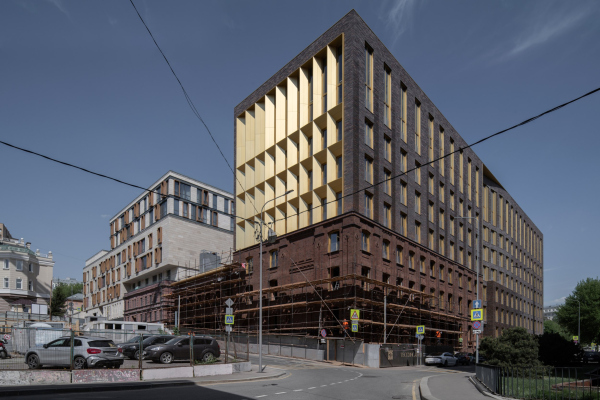 “Tessinsky-1” houseCopyright: Photograph © Daniel Annenkov / provided by SSA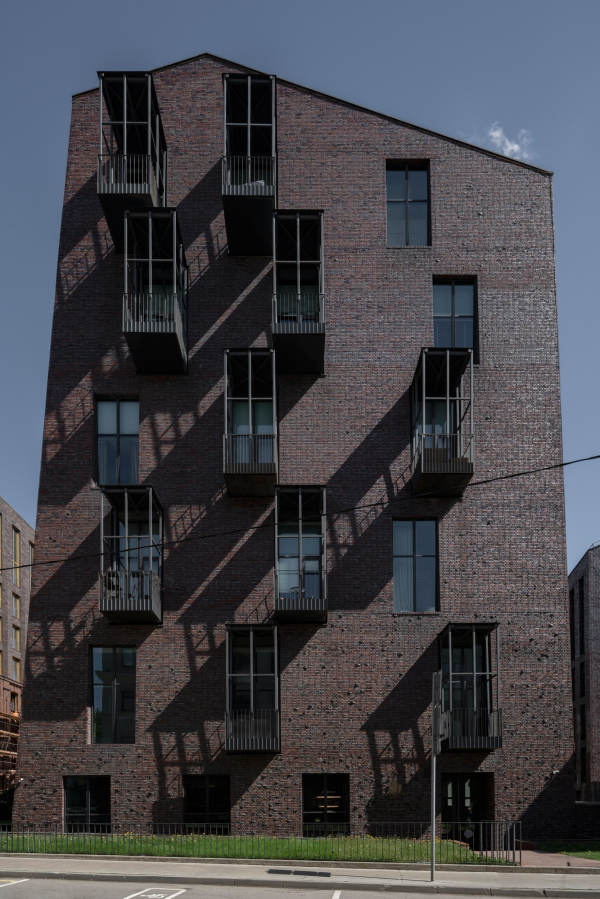 “Tessinsky-1” residential complexCopyright: Photograph © Daniel Annenkov / provided by SSAThe reason for these features is clear: while Art House is immersed, so to speak, in reflections on old industrial architecture, Tessinsky-1 is directly immersed in brick industrial architecture, as it is built on the site of the former EMA electro-medical equipment factory. Tessinsky-1 incorporates the façades of two factory buildings from the 19th century, while a third Soviet-era building, reconstructed between 2008 and 2012, determined the parameters of the side of the house that faces Tessinsky Lane. The new house is all about the memories of the factory buildings. “Tessinsky-1” houseCopyright: Photograph © Daniel Annenkov / provided by SSAHowever, these are indeed memories: the façades of the 19th-century buildings, which did not have protected status, were initially planned to be preserved, but they could not withstand the loads and were eventually reproduced in red brick, treated with a sandblaster and tinted brown. This solution fall very much in line with Moscow’s established practice of reproducing fragments of historical buildings within new complexes – consider, for example, Hermitage Plaza or the business center on Strastnoy Boulevard. As with those examples, the façades were measured and reproduced closely to the original. Only a local preservation activists, and perhaps not every one, would notice the difference. 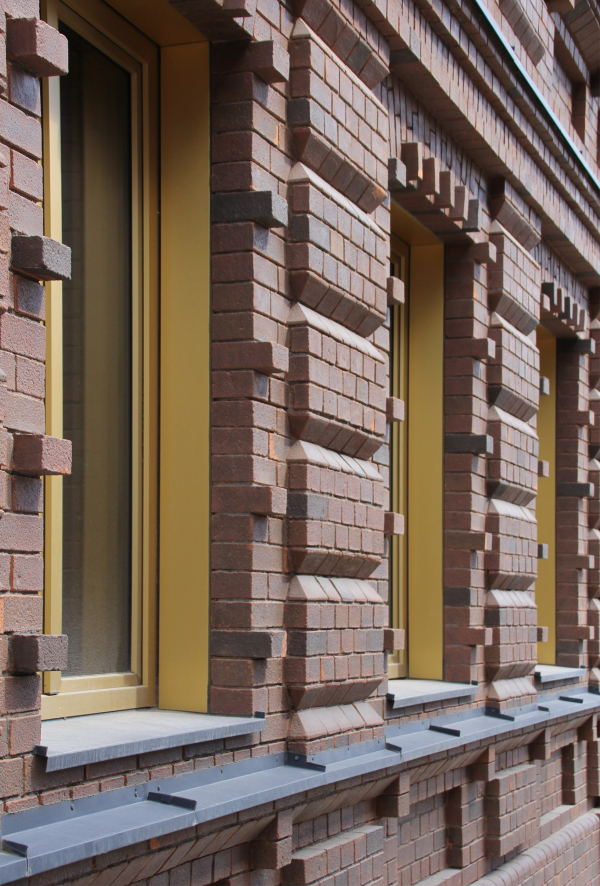 “Tessinsky-1” houseCopyright: Photograph © Julia Tarabarina, Archi.ru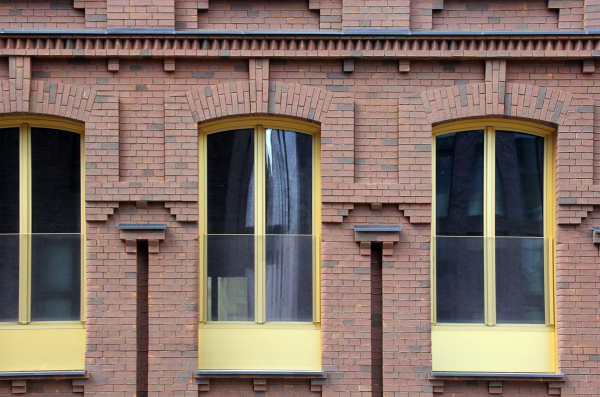 “Tessinsky-1” houseCopyright: Photograph © Julia Tarabarina, Archi.ru “Tessinsky-1” houseCopyright: Photograph © Daniel Annenkov / provided by SSA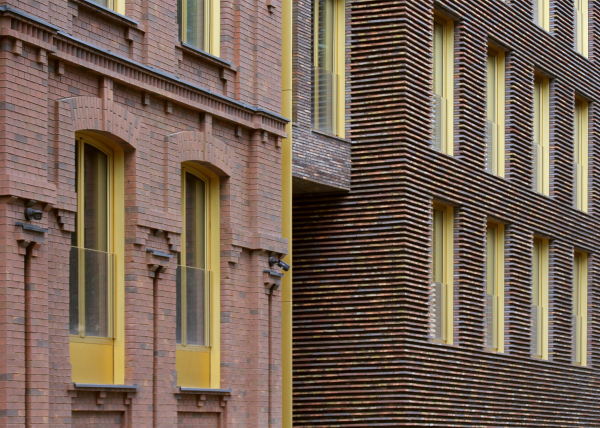 “Tessinsky-1” residential complexCopyright: Photograph © Julia Tarabarina, Archi.ruWhile examining the completed house, I managed to notice one detail: the asymmetrical rounding of one window slope in the new part echoes the “Romanesque” roundings in the windows from 1895 by architect Sergey Kalugin. 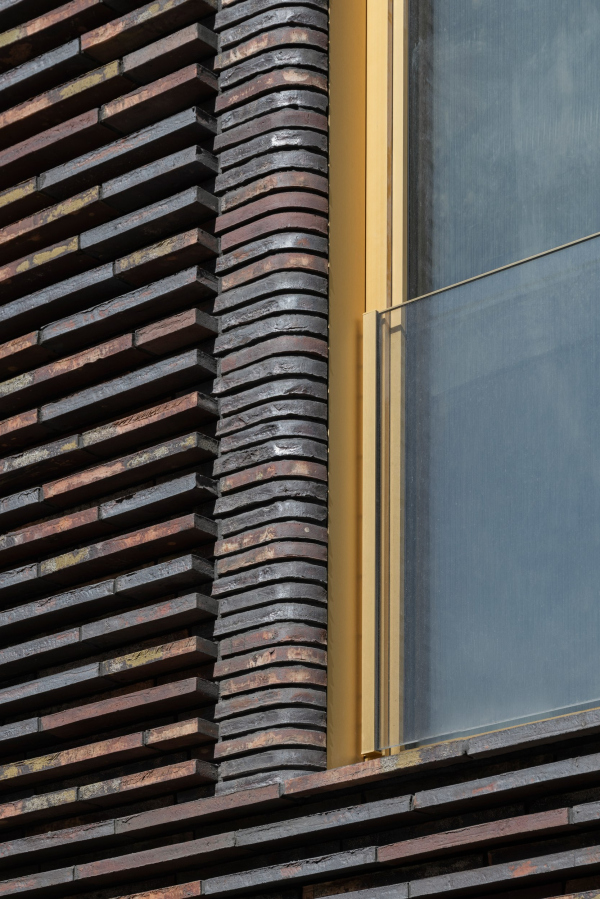 “Tessinsky-1” houseCopyright: Photograph © Daniel Annenkov / provided by SSA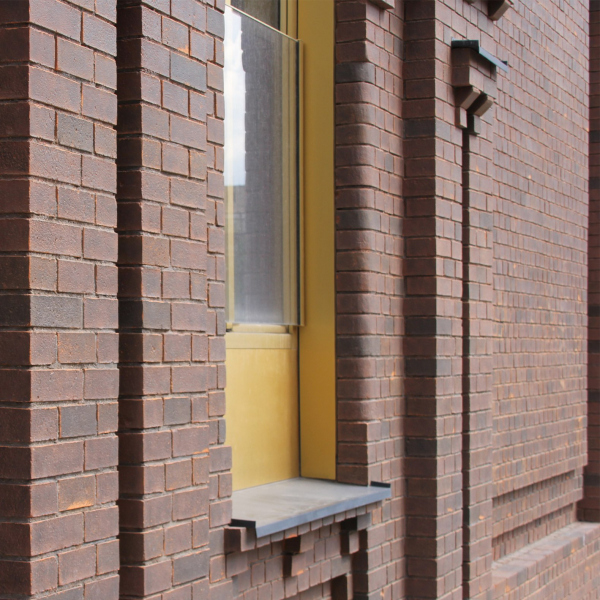 “Tessinsky-1” residential complexCopyright: Photograph © Julia Tarabarina, Archi.ruIn other words, on his modern façade, Skuratov did not just invent a motif; he “borrowed” it from the historical part of the building. It’s interesting when you can notice such subtle nuances in a finished house. So, when viewed from the city, Tessinsky-1, unlike Art House, is “woven” into the urban fabric; it seems to belong to it. This circumstance makes the house more complex: posing many questions, the house provides many answers. It climbs up the slope, forming the beginning of Nikolovorobinsky Lane along with the NV/9 house designed by Irina Rimashevskaya. The house captures urban axes, balances verticals and horizontals, and even constructs itself from the vertical “head” at the intersection (by the way, have you noticed that Skuratov’s houses very often have “heads”?) to the “tail” of the cantilever on the eastern end. The house plays with two levels of height: historical and modern. It directs the environment around it, maintaining control but also allowing for picturesque liberties, balancing the asymmetry of its parts. In sum, it’s a complex composition, but the complexity does not catch the eye, which means it has been successfully balanced.  “Tessinsky-1” houseCopyright: Photograph © Daniel Annenkov / provided by SSA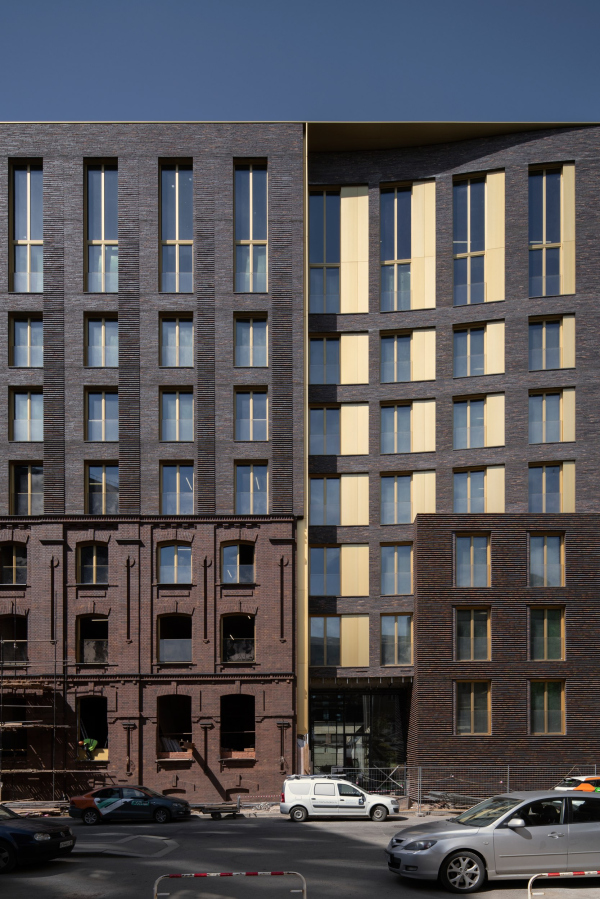 “Tessinsky-1” residential complexCopyright: Photograph © Daniel Annenkov / provided by SSAAnother feature echoes modern trends. Over the past decade, gold-toned metal has become popular in Moscow. It’s used pretty much everywhere: in sports facilities, residential buildings, and more. Gold has almost become the norm; just look at the neighboring Titul residential complex designed by Vadim Grekov. For Sergey Skuratov, Tessinsky-1 is his first experience working with a golden tone. Now, looking at the house, the architect says that the tone is too bright, too shiny, and the window frames have turned out to be very golden. He even concludes, “I won’t use it again!” but adds that the shine should fade a bit over the years. After all, it’s not a composite but architectural bronze, an alloy of copper and zinc. “Tessinsky-1” houseCopyright: Photograph © Daniel Annenkov / provided by SSANevertheless, the interplay of brick and gold has turned out to be interesting in its nonlinearity. The volumetric grid of the tower’s slopes is the main “picture” the house presents to the city; it is what makes it recognizable. However, there are additional nuances as well. In the “fold of the curtain” above the main lobby from the Tessinsky Lane side, the golden window slopes increase, emphasizing the curve – this part of the house can even be seen from the Garden Ring. “Tessinsky-1” houseCopyright: Photograph © Daniel Annenkov / provided by SSA“Tessinsky-1” houseCopyright: Photograph © Daniel Annenkov / provided by SSAThe brick façade of the smaller building is topped with a golden “cap” of the cornice, connected to the volume and the roof, crowned with a pair of vent pipes. There is quite a bit of charm in this golden “sculpting” over the dark façade. The city seems to become “golden” right before our eyes, which can be not only a metaphor but also a literal truth, reflected in the new favorite techniques of Moscow architects. 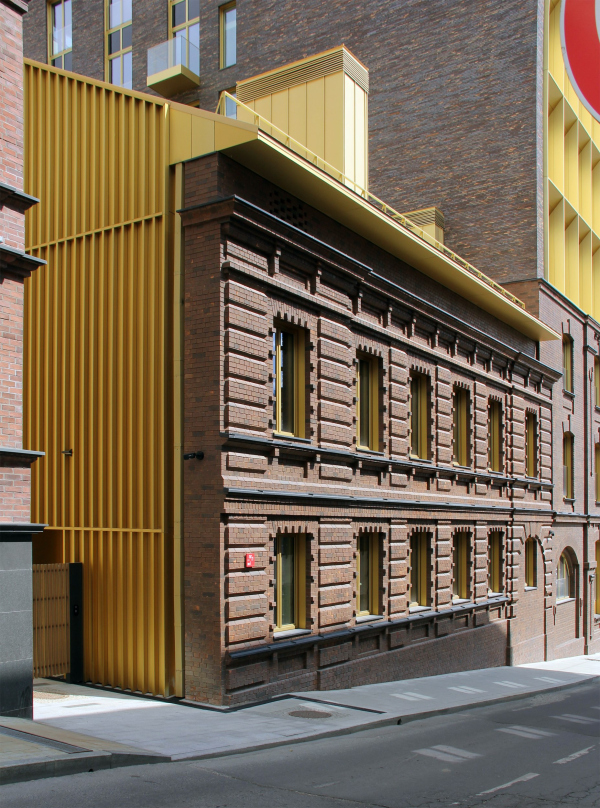 “Tessinsky-1” houseCopyright: Photograph © Julia Tarabarina, Archi.ru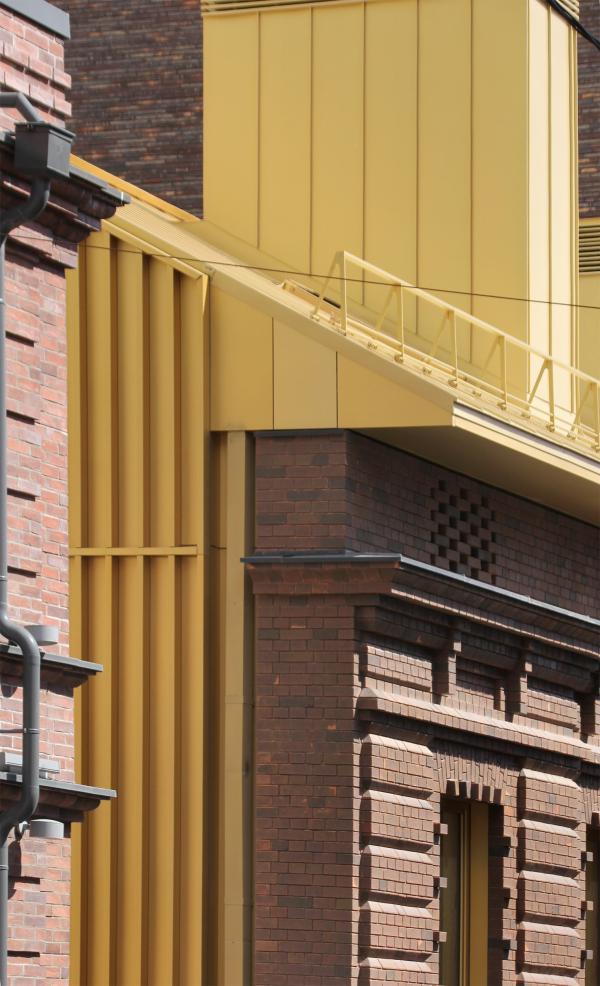 “Tessinsky-1” houseCopyright: Photograph © Julia Tarabarina, Archi.ruAt the same time, the golden slopes of the high building’s “head” direct light almost all day long, like a bronze mirror, into the perspective of Nikolovorobinsky Lane: from this side, the upper part, especially on a sunny day, wonderfully glows yellow.  “Tessinsky-1” residential complex, view from Nikolovorobinsky LaneCopyright: Photograph © Julia Tarabarina, Archi.ru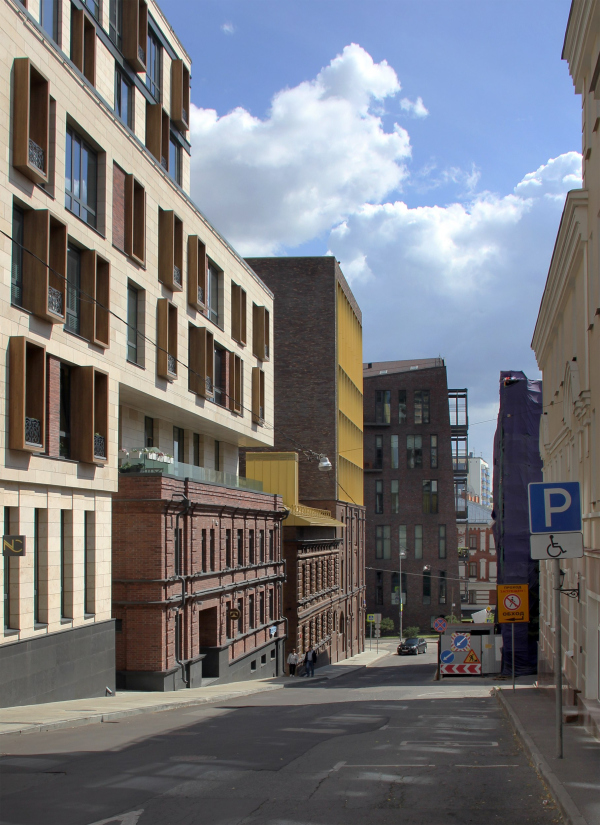 “Tessinsky-1” residential complex, view from Nikolovorobinsky LaneCopyright: Photograph © Julia Tarabarina, Archi.ruMore on Golden Surfaces! In recent years, golden surfaces in Moscow’s practice have been flat, curved, ornate, or framed – there are many variations. Meanwhile, Skuratov selects material and form combinations that have not yet been used in Moscow: a grid of pointed metal ribs on the “head” and a calmer and more regular, yet still textured, grid on the smaller building. In both cases, the gold is subordinated to the relief, making its perception livelier. On the inner façade of the “urban villa”, the grid is simply necessary: thanks to it, the gold recedes, and the volume acquires the desirable degree of complexity. 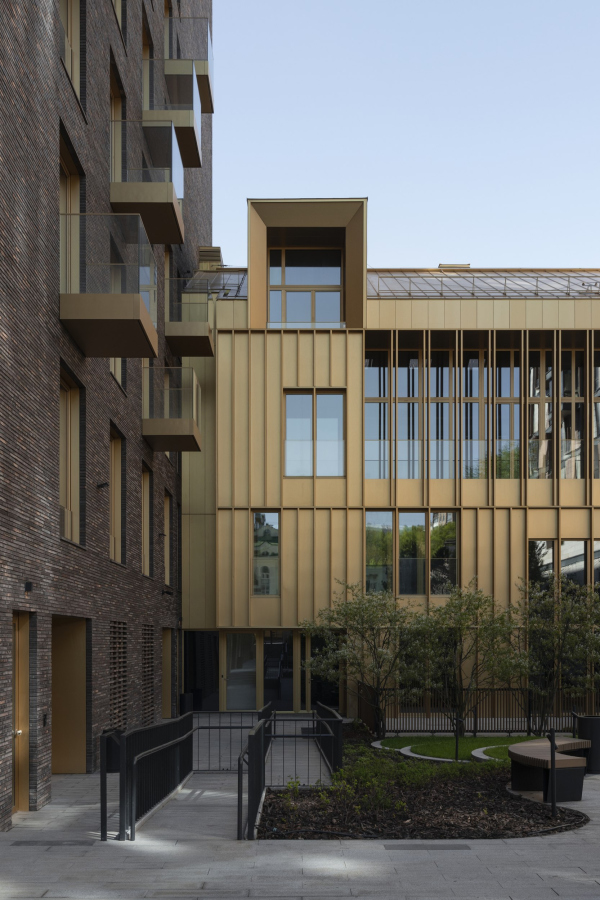 “Tessinsky-1” residential complexCopyright: Photograph © Daniel Annenkov / provided by SSA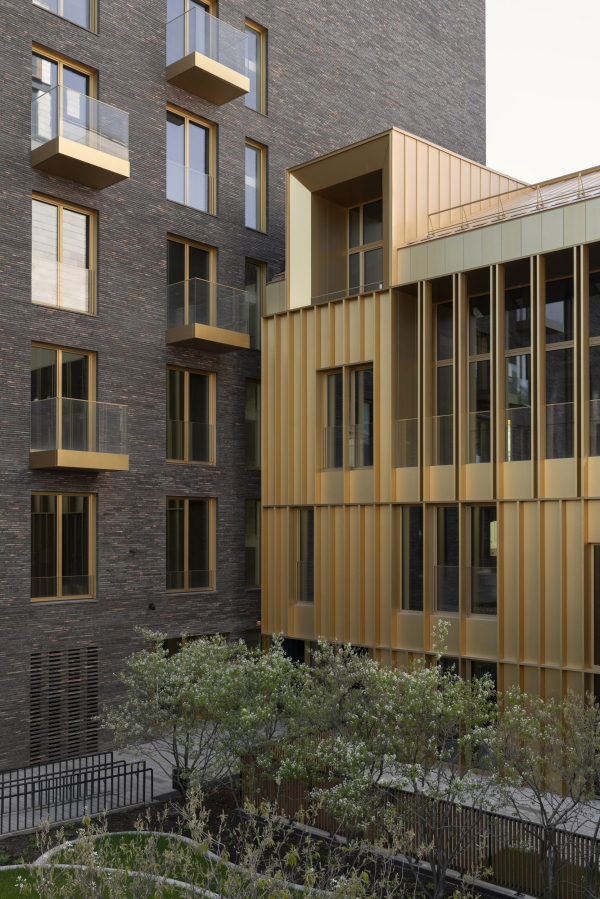 “Tessinsky-1” residential complexCopyright: Photograph © Daniel Annenkov / provided by SSA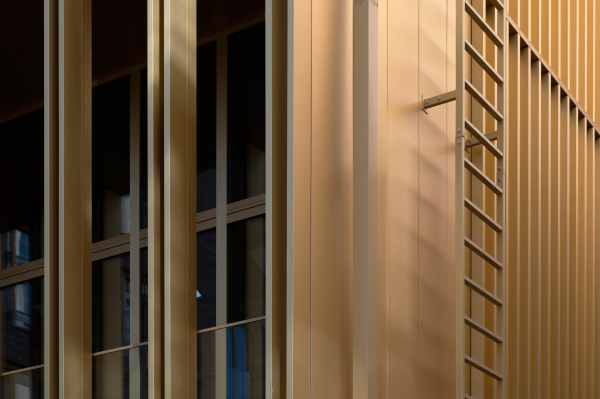 “Tessinsky-1” residential complexCopyright: Photograph © Daniel Annenkov / provided by SSA “Tessinsky-1” residential complexCopyright: Photograph © Daniel Annenkov / provided by SSAThe courtyard, where the fountain basin reminds us of one of Moscow’s vanished “small rivers”, is intended only for the residents of the house. If the façade of the building, from the side of Nikolovorobinsky Lane, “climbs upwards”, maintaining fidelity to historical and geographical truth, inside it is leveled to the pavement’s measure: the lobby floor and the courtyard floor are one single surface, paved identically. In the northern part, the NV/9 house towers; on this side, there is a retaining wall, which opens with an arch only for the fountain’s water. Above, there is a balcony that allows you to view the courtyard from the upper level and a staircase descending from the upper entrance of Nikolovorobinsky Lane. “Tessinsky-1” residential complexCopyright: Photograph © Daniel Annenkov / provided by SSAThe structure of this courtyard somewhat resembles an Italian patio: levels, stairs, regularity, and seclusion. It is worth noting that on the roof of the elongated building, patios, and open-top terraces designed for the upper apartments, are also arranged. The reconstruction project in the Bolshoy Nikolovorobinsky Alley. The building is converted into a housing complex.Copyright: © Sergey Skuratov ARCHITECTSThe courtyard continues the themes started on the façades. The triangular ribs of the “head” towers on the façades face the sunset, while here the “body” of the villa, also latticed and golden, faces east. There, golden inserts in the curve of the recess; here, golden protrusions of the balconies – you can imagine that someone pressed slightly from the outside for them to appear inside. But the best time in this courtyard is, of course, on a sunny day – then the windows of the NV/9 house cast reflections on the dark brick wall, bringing it to life. And the golden wall of the villa – how can we not think of Domus Aurea? – also distributes sunlight reflections, but only in the morning. 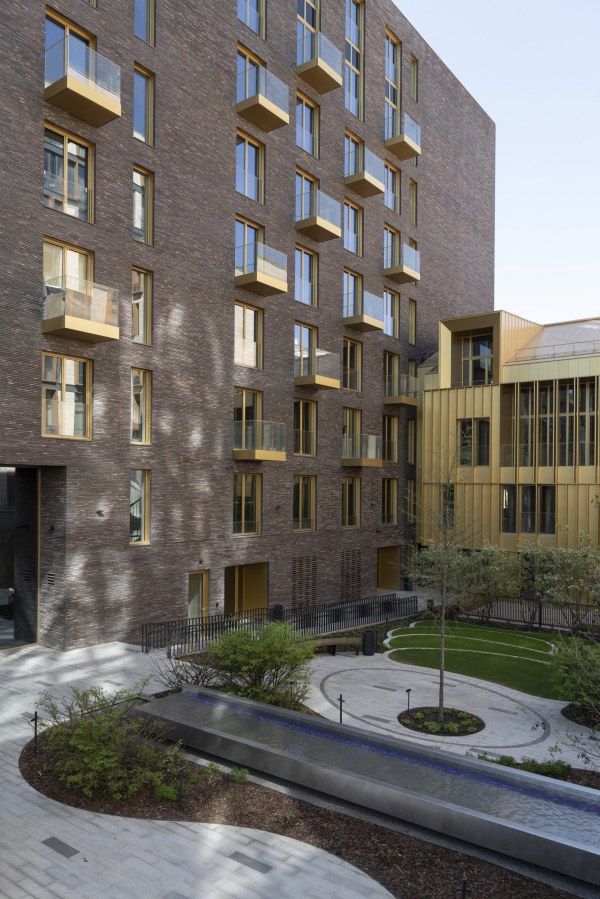 “Tessinsky-1” residential complexCopyright: Photograph © Daniel Annenkov / provided by SSA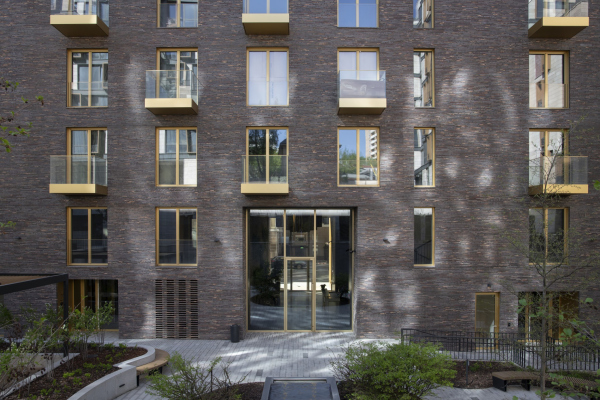 “Tessinsky-1” residential complexCopyright: Photograph © Daniel Annenkov / provided by SSA “Tessinsky-1” residential complexCopyright: Photograph © Daniel Annenkov / provided by SSA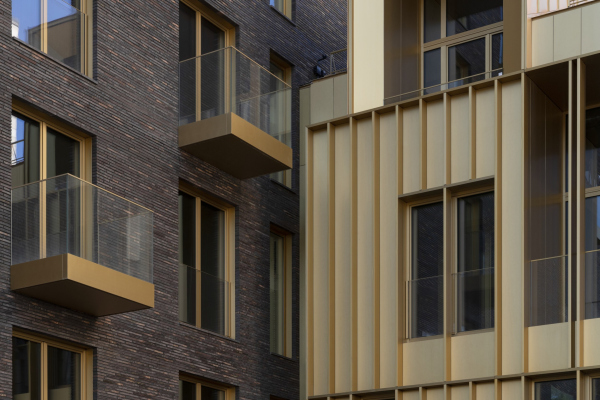 “Tessinsky-1” residential complexCopyright: Photograph © Daniel Annenkov / provided by SSA “Tessinsky-1” residential complexCopyright: Photograph © Daniel Annenkov / provided by SSA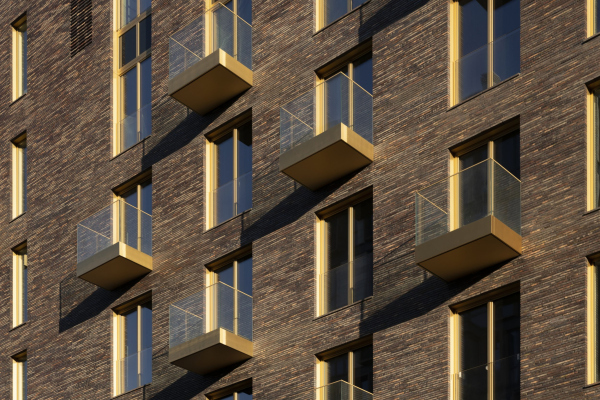 “Tessinsky-1” residential complexCopyright: Photograph © Daniel Annenkov / provided by SSA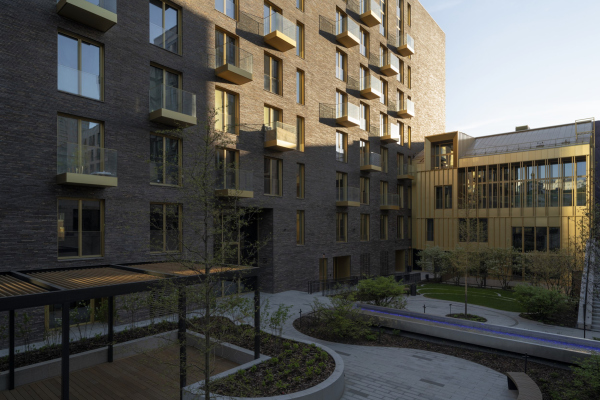 “Tessinsky-1” residential complexCopyright: Photograph © Daniel Annenkov / provided by SSA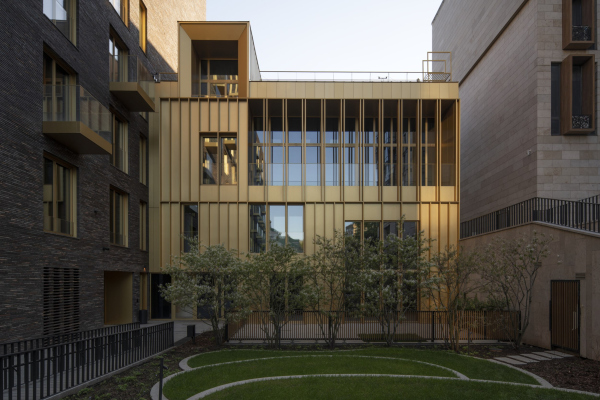 “Tessinsky-1” residential complexCopyright: Photograph © Daniel Annenkov / provided by SSA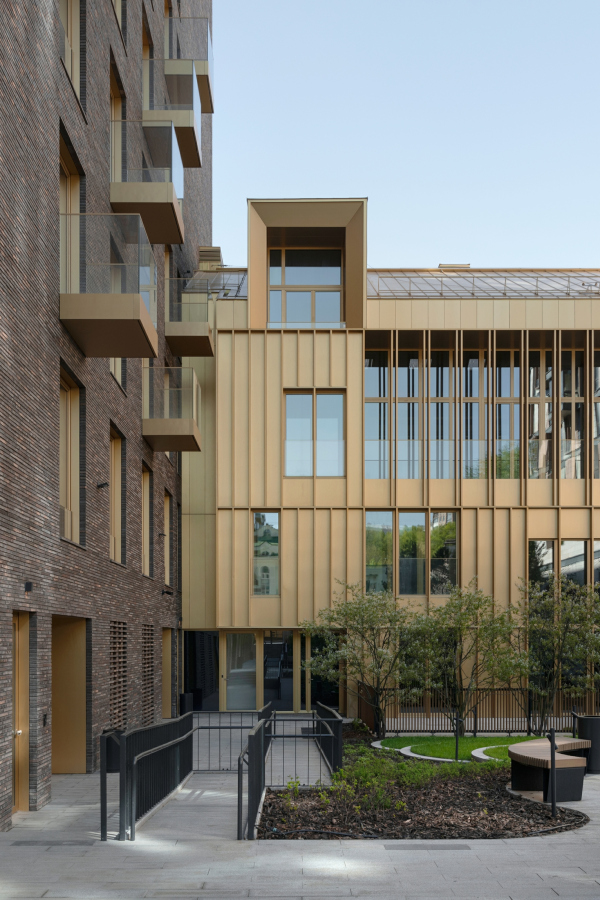 “Tessinsky-1” residential complexCopyright: Photograph © Daniel Annenkov / provided by SSA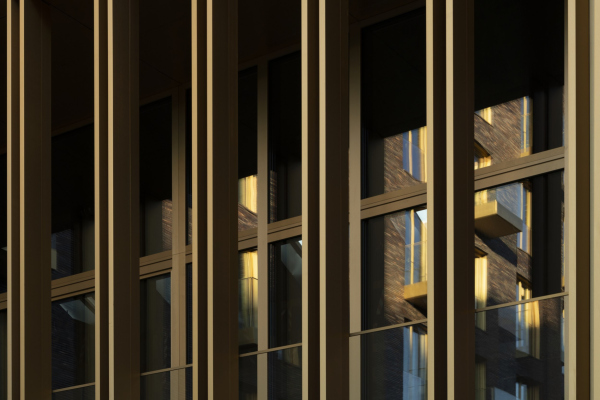 “Tessinsky-1” residential complexCopyright: Photograph © Daniel Annenkov / provided by SSA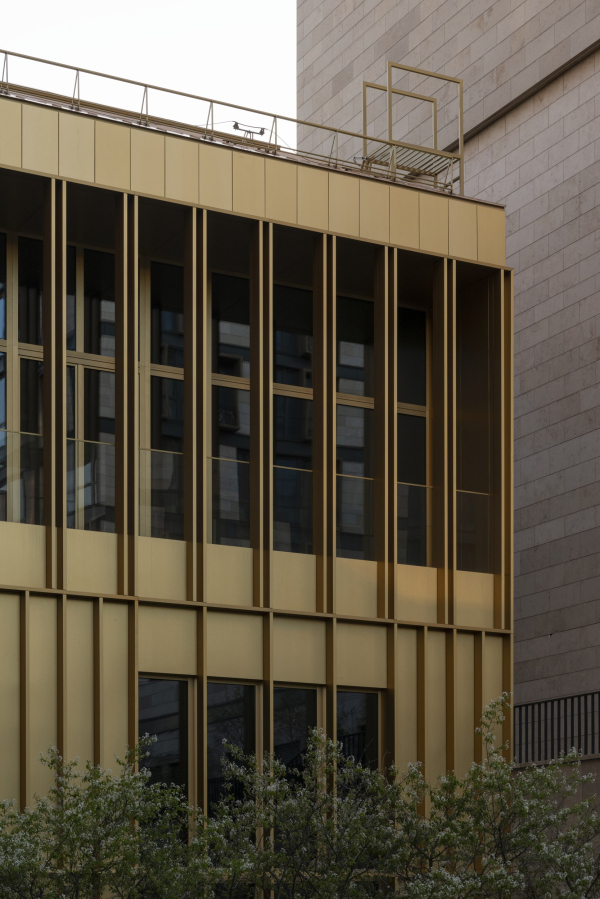 “Tessinsky-1” residential complexCopyright: Photograph © Daniel Annenkov / provided by SSA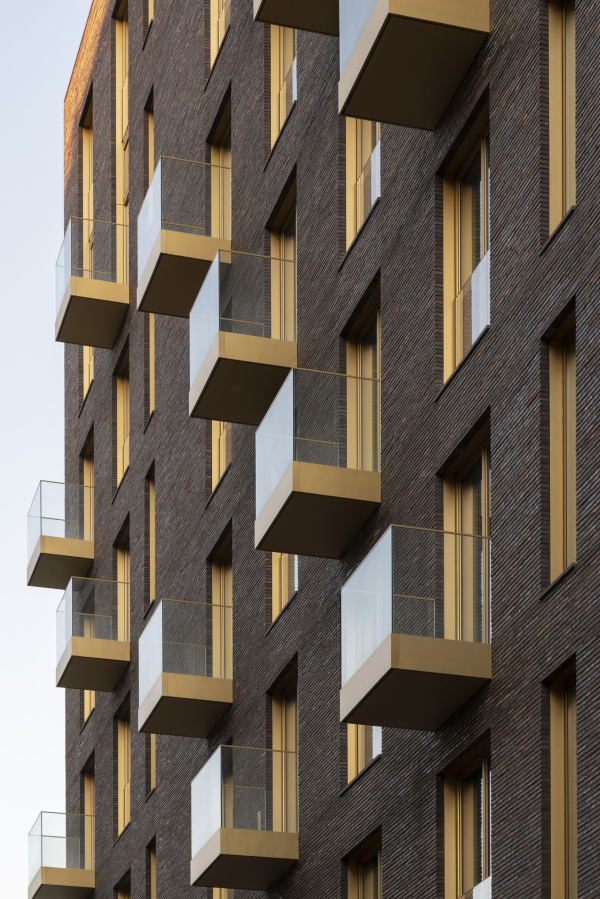 “Tessinsky-1” residential complexCopyright: Photograph © Daniel Annenkov / provided by SSAThe olden window frames – let’s agree with the architect – really add a certain contrast and “poster-like” quality to the design. However, I wouldn’t say that this kind of “poster-like” quality is bad in itself. One can see a “highlight” in it: a statement on the themes of modern Moscow and at the same time, the colorful specificity historically inherent in Moscow architecture. This very circumstance helps the building engage in a dialogue with all levels of context, both historical and geographical: let’s not forget that it is surrounded by the golden domes of churches from different eras, even the yellow Empire-style façades at the Yauza Gate, and the bold orange Silver City Business Center are part of the same mise-en-scène. 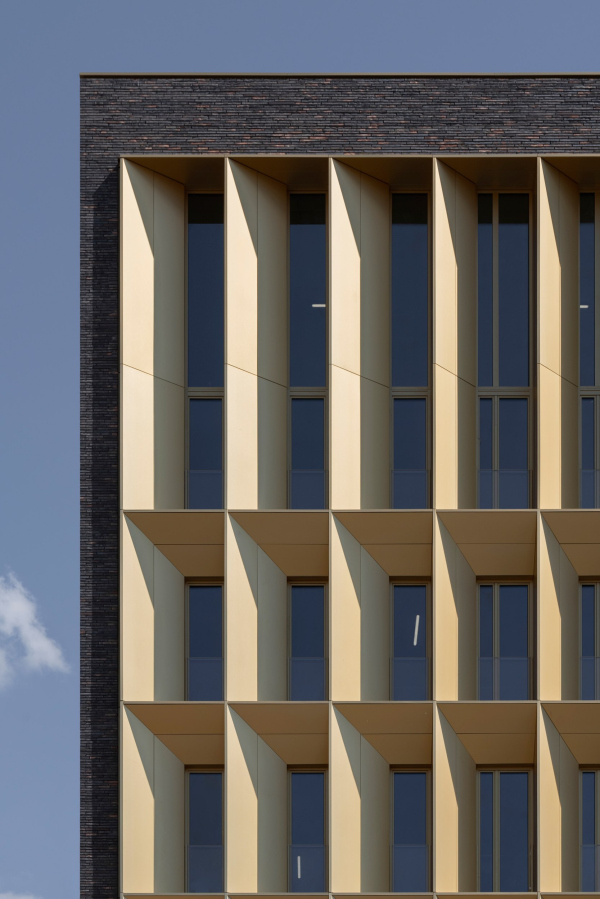 “Tessinsky-1” houseCopyright: Photograph © Daniel Annenkov / provided by SSA “Tessinsky-1” houseCopyright: Photograph © Daniel Annenkov / provided by SSA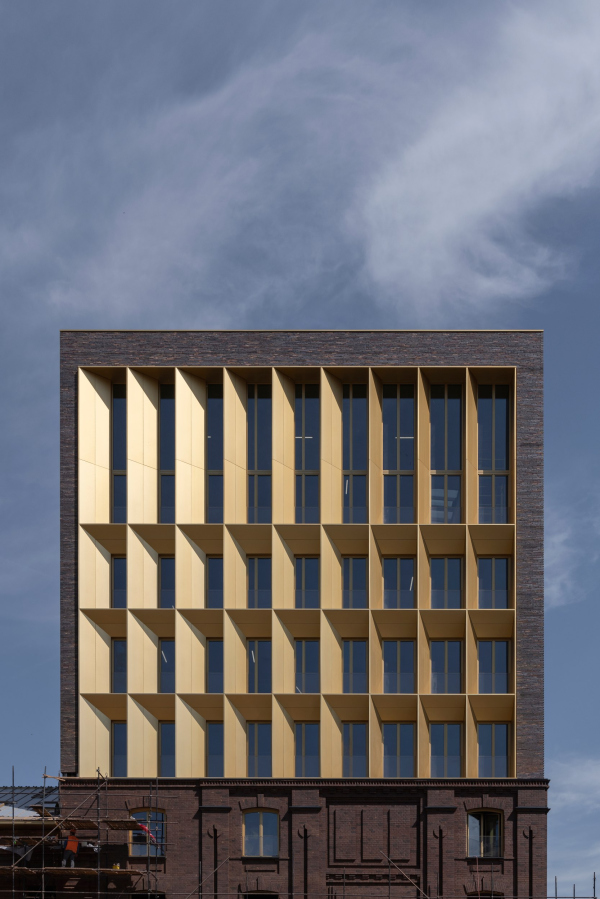 “Tessinsky-1” houseCopyright: Photograph © Daniel Annenkov / provided by SSA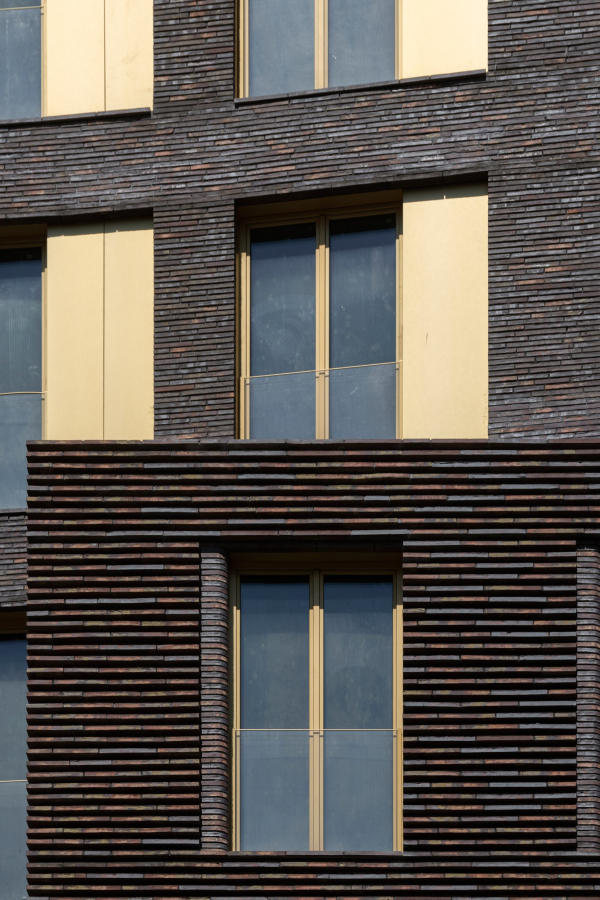 “Tessinsky-1” residential complexCopyright: Photograph © Daniel Annenkov / provided by SSA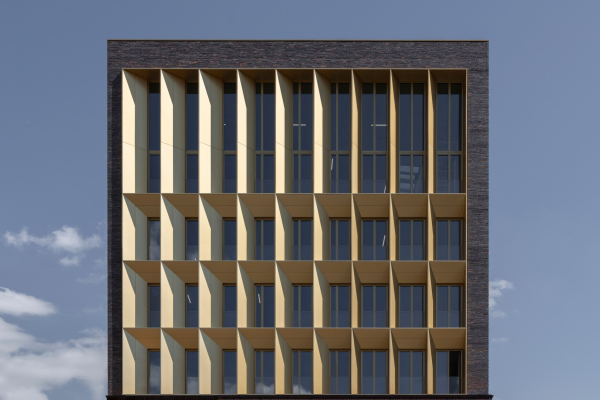 “Tessinsky-1” residential complexCopyright: Photograph © Daniel Annenkov / provided by SSA “Tessinsky-1” residential complexCopyright: Photograph © Daniel Annenkov / provided by SSAMoreover, Skuratov is an “artistic” architect. To the combination of two basic and simple materials—brick and gold—he adds a complex one: Petersen Columba brick from the Danish factory of Christian Petersen. Ten types and shades of brick were used in the masonry; several sizes were made specifically for this house to order. Essentially, the façade turned out to be handmade; one can just sit there and admire it for an extended period of time. Terracotta in various shades alternates, following the laws of impressionist painting, with sunny mustard-yellow, and most importantly, with ultramarine blue, which allows the overall tone to remain dark without being black. 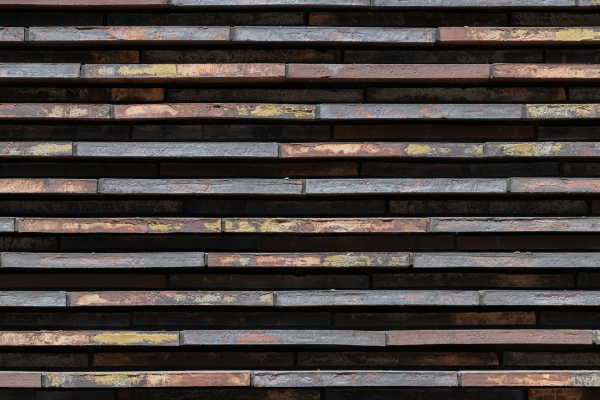 “Tessinsky-1” houseCopyright: Photograph © Daniel Annenkov / provided by SSA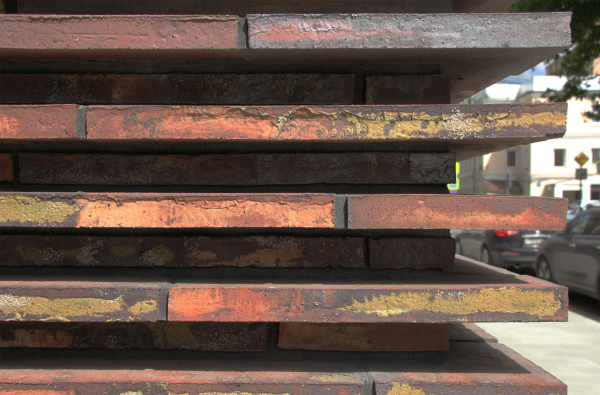 “Tessinsky-1” houseCopyright: Photograph © Julia Tarabarina, Archi.ruBy the way, despite all the diversity of the last decade’s bright variety in the development of Moscow architecture, this type of it has not been seen anywhere before: the bricks are bright but not flashy, multicolored but maintaining one tone; their picturesque restraint is reminiscent of Karelian granite stones, which also seem to be of one tone, but with very bright inclusions. Certainly, there is no other surface like this in Moscow, and it is unknown when another might appear. 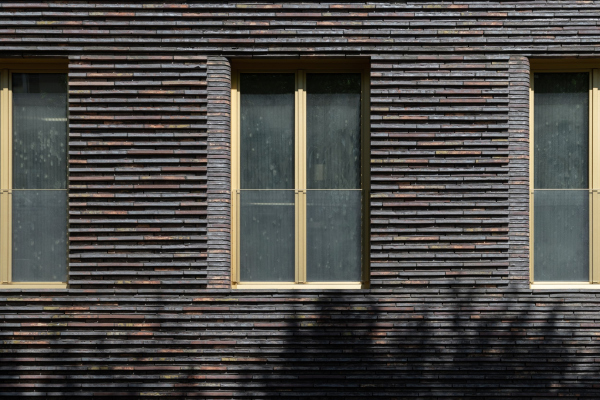 “Tessinsky-1” houseCopyright: Photograph © Daniel Annenkov / provided by SSA “Tessinsky-1” residential complexCopyright: Photograph © Daniel Annenkov / provided by SSAIt is this brick, and not the gold at all, that is the most precious element of the façade solutions here. Thin, multicolored with noticeable yellowish inclusions, striped brick serves as a background, absorbing contrasting color properties and “reconciling” them within itself. On the other hand, the surface is picturesque, and the masonry structure with deep alternations is graphic, and its hatching controls the perception of the new part. At the top, it continues the verticals of the pilasters of Sergei Kalugin’s building, and further east, its outline, in both cases smoothly dissolving the contours into the plane of the new façade like a shadow. Remarkably, the stripes dissolve into the wall so finely. “Tessinsky-1” houseCopyright: Photograph © Julia Tarabarina, Archi.ruThe striped masonry is also successfully reflected in the glass of the lobby, creating a perspective; thus, the exterior and interior are connected twice: first, because the walls and floor of the lobby actually continue the façades and pavement (and the glass is transparent), and second, through the “imposed” reflection on the glass. Any changes in the striped masonry are easily felt and allow the new surface to be built not with large articulated décor, as in historical façades, but with subtle hints that can be easily overlooked or, on the contrary, closely examined for a long time. 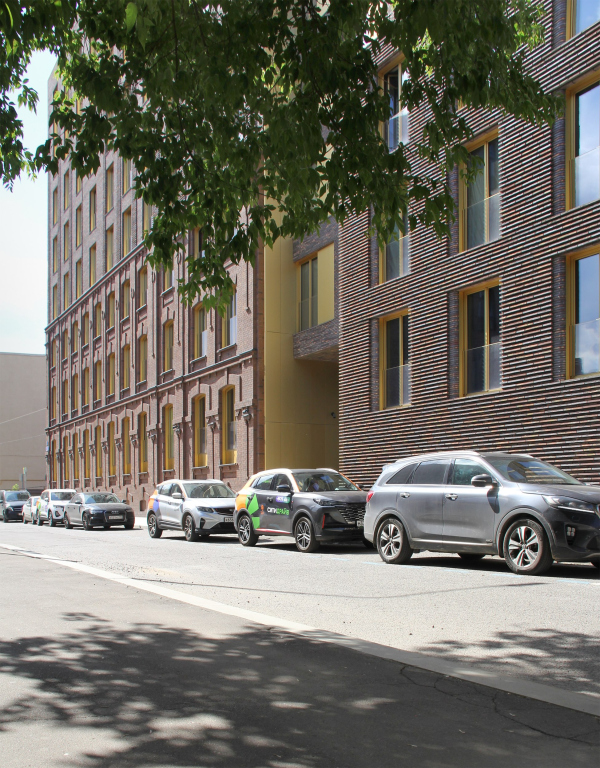 “Tessinsky-1” houseCopyright: Photograph © Julia Tarabarina, Archi.ru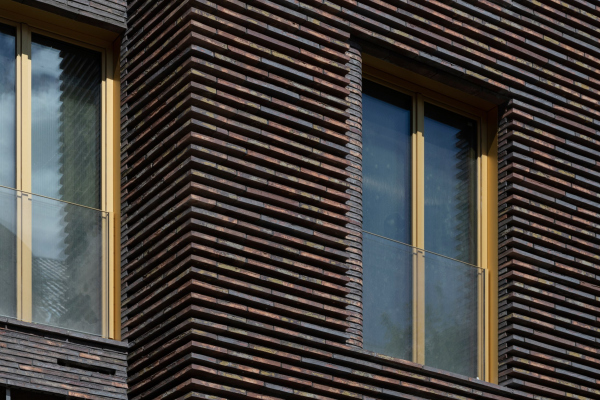 “Tessinsky-1” residential complexCopyright: Photograph © Daniel Annenkov / provided by SSA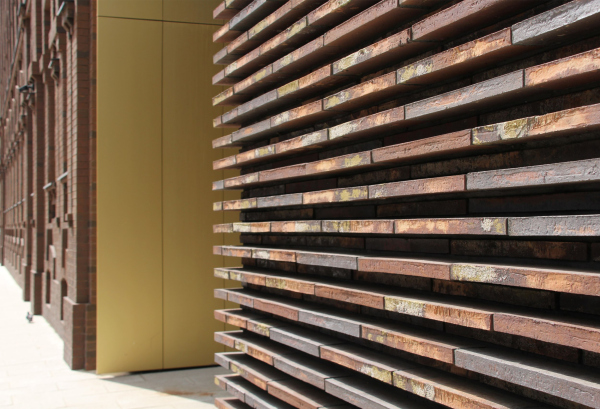 “Tessinsky-1” houseCopyright: Photograph © Julia Tarabarina, Archi.ru “Tessinsky-1” residential complexCopyright: Photograph © Daniel Annenkov / provided by SSA_______________________________________ * Tessinsky Lane is named after a 19th-century homeowner, Tessin. The surname derives from the Swiss river Tessin, which gave its name to one of the cantons, and the river’s name translates as “a river flowing many times” – it seems that this translation already holds something for Tessinsky Lane. It is also attributed to the Old French word “tessé”, meaning a plot of land overgrown with grass. However, all these word plays with the specifics of the site intersect only indirectly and accidentally. |
|


